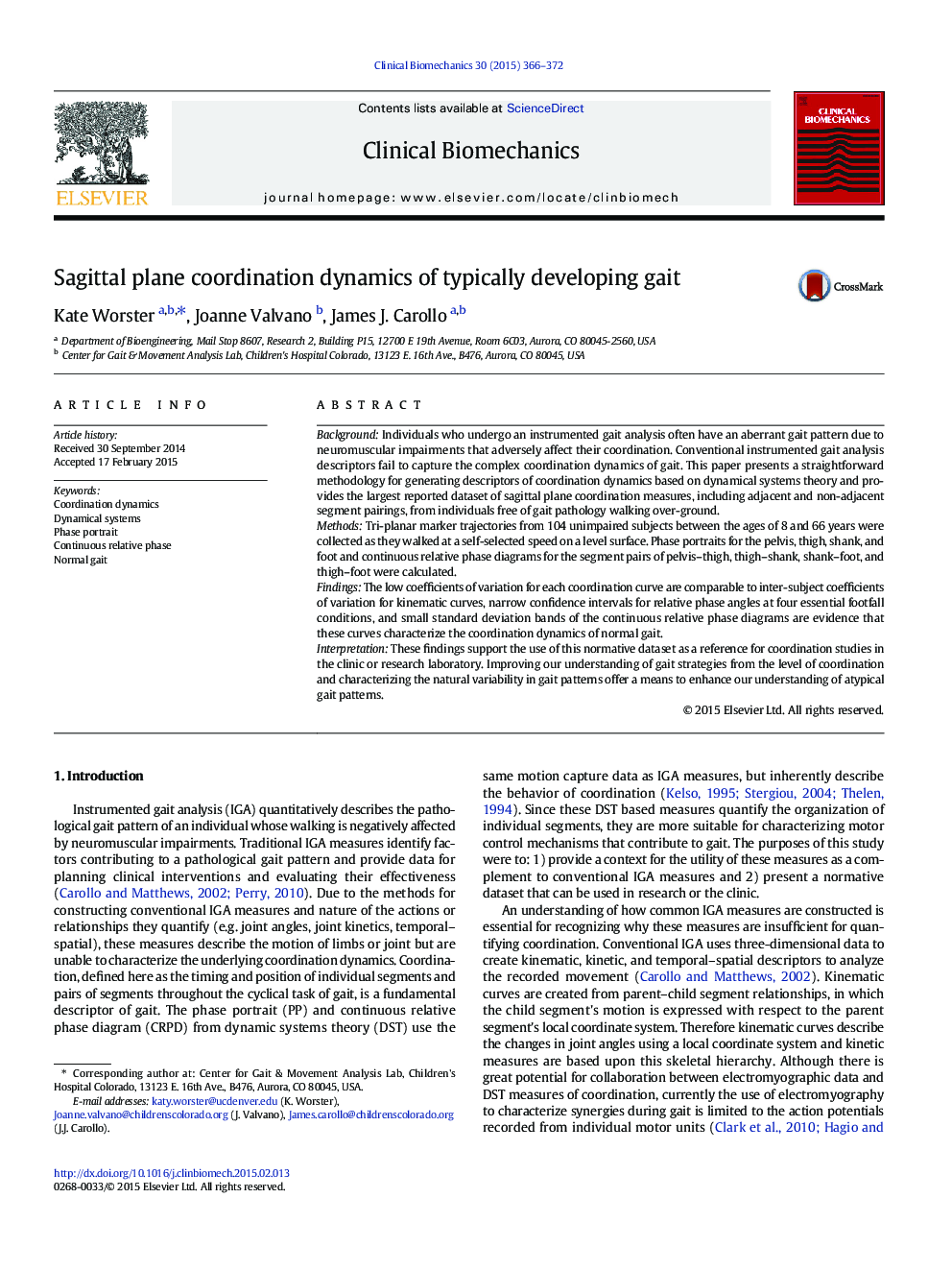| Article ID | Journal | Published Year | Pages | File Type |
|---|---|---|---|---|
| 6204747 | Clinical Biomechanics | 2015 | 7 Pages |
â¢Quantifying coordination of leg segments enhances our understanding of gait.â¢Provide the largest reported normative dataset of sagittal coordination dynamicsâ¢Straightforward methodology to generate phase portraits and relative phase diagramsâ¢Descriptive statistics support these tools quantify normal coordination dynamics.â¢Clinical examples for applying these measures to understand atypical gait patterns
BackgroundIndividuals who undergo an instrumented gait analysis often have an aberrant gait pattern due to neuromuscular impairments that adversely affect their coordination. Conventional instrumented gait analysis descriptors fail to capture the complex coordination dynamics of gait. This paper presents a straightforward methodology for generating descriptors of coordination dynamics based on dynamical systems theory and provides the largest reported dataset of sagittal plane coordination measures, including adjacent and non-adjacent segment pairings, from individuals free of gait pathology walking over-ground.MethodsTri-planar marker trajectories from 104 unimpaired subjects between the ages of 8 and 66Â years were collected as they walked at a self-selected speed on a level surface. Phase portraits for the pelvis, thigh, shank, and foot and continuous relative phase diagrams for the segment pairs of pelvis-thigh, thigh-shank, shank-foot, and thigh-foot were calculated.FindingsThe low coefficients of variation for each coordination curve are comparable to inter-subject coefficients of variation for kinematic curves, narrow confidence intervals for relative phase angles at four essential footfall conditions, and small standard deviation bands of the continuous relative phase diagrams are evidence that these curves characterize the coordination dynamics of normal gait.InterpretationThese findings support the use of this normative dataset as a reference for coordination studies in the clinic or research laboratory. Improving our understanding of gait strategies from the level of coordination and characterizing the natural variability in gait patterns offer a means to enhance our understanding of atypical gait patterns.
